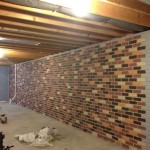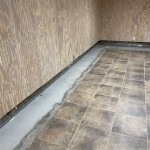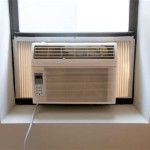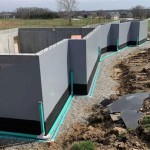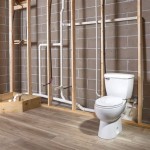Basement Drain Smells Like Sewer Gas: Causes, Identification, and Remediation
The presence of a sewer gas odor emanating from a basement drain is a common, unpleasant, and potentially hazardous issue. While the smell itself is offensive, the underlying cause can indicate more significant problems within the plumbing system or foundation. Understanding the reasons behind this odor, coupled with appropriate identification and remediation strategies, is crucial for maintaining a healthy and safe living environment.
Sewer gas is a complex mixture of gases produced during the decomposition of organic waste materials. It typically contains methane, hydrogen sulfide, ammonia, carbon dioxide, and nitrogen. Methane is flammable, contributing to potential explosion hazards. Hydrogen sulfide, even at low concentrations, is responsible for the characteristic rotten egg smell and can be harmful in higher concentrations, causing symptoms ranging from eye irritation to respiratory distress and, in extreme cases, death. Therefore, any persistent sewer gas odor should be addressed promptly and effectively.
The Role of P-Traps in Preventing Sewer Gas Leaks
A primary function of plumbing fixtures is to discharge wastewater while simultaneously preventing sewer gases from entering the living space. This crucial task is largely accomplished by the presence of P-traps. A P-trap is a U-shaped section of pipe installed under sinks, toilets, showers, and floor drains. This configuration is designed to hold a small amount of water within the bend, effectively creating a seal that prevents sewer gases from traveling up the drainpipe and into the basement.
When functioning correctly, the water in the P-trap acts as a barrier. However, several factors can compromise the integrity of this water seal, leading to sewer gas leakage. These factors include infrequent drain usage, evaporation, siphonage, and pressure fluctuations within the plumbing system. Identifying the specific cause of a compromised P-trap is essential for implementing the correct remedial action.
For example, a floor drain in a rarely used basement laundry area might experience evaporation. Over time, the water in the P-trap evaporates, breaking the seal and allowing sewer gases to escape. Similarly, drains in guest bathrooms or unused utility rooms can also be susceptible to this issue.
Siphonage occurs when negative pressure within the drainpipe pulls the water out of the P-trap. This can happen when a nearby plumbing fixture, such as a toilet, is flushed, creating a strong suction force. Improperly vented plumbing systems are particularly prone to siphonage.
Pressure fluctuations within the sewer line can also force gases past the P-trap seal. This is more common in older homes with inadequate venting systems or during periods of heavy rainfall, which can overload the sewer system.
Identifying Potential Causes of Sewer Gas Smell
Pinpointing the source of the sewer gas odor is a critical first step in addressing the problem. A systematic approach is necessary to identify the compromised drain or plumbing component responsible for the leak. Several methods can be employed to help locate the source.
A visual inspection of all drains in the basement is a good starting point. Look for signs of water stains or discoloration around the drain opening, which could indicate a slow leak that is contributing to the problem. Also, check for debris or obstructions in the drain that might be hindering proper drainage and creating a breeding ground for bacteria that contribute to the odor.
Smell testing can be a subjective but helpful technique. Carefully sniff around each drain to try to isolate the strongest source of the odor. Be cautious not to inhale deeply, as high concentrations of sewer gas can be harmful. It may be helpful to ventilate the area while conducting this test.
The "bucket test" is a simple method for checking the P-trap seal. Slowly pour a bucket of water down the drain in question. If the sewer gas smell dissipates after pouring the water, it indicates that the P-trap seal was likely broken and has now been restored. This reinforces the assessment of evaporation as the root cause, particularly for drains with infrequent usage.
A more comprehensive inspection may involve checking the plumbing vent system. Plumbing vents are designed to allow air into the drainpipes, preventing negative pressure and ensuring proper drainage. Blocked or damaged vents can disrupt the pressure balance and lead to siphonage. Vent pipes typically extend through the roof of the house. Obstructions such as bird nests, leaves, or snow can block the vent and impair its functionality. A professional plumber can inspect the vent system for blockages or damage using specialized equipment.
Another possible cause, though less frequent, is a crack or break in the drainpipe itself. This is more likely in older homes with cast iron or clay pipes, which are susceptible to corrosion and breakage over time. A damaged pipe can allow sewer gases to escape directly into the basement. Identifying a cracked pipe may require a professional plumbing inspection using techniques like video camera inspection.
Foundation cracks can also provide a pathway for sewer gases to enter the basement. If the sewer line runs under or through the foundation, cracks in the concrete can allow gases to seep into the living space. Addressing foundation cracks is essential for not only preventing sewer gas leaks but also for maintaining the structural integrity of the building.
Remediation Strategies for Sewer Gas Odors
Once the cause of the sewer gas odor has been identified, appropriate remediation strategies can be implemented. The specific approach will depend on the underlying issue affecting the P-trap or plumbing system.
For P-traps that have dried out due to infrequent use, simply replenishing the water seal is often sufficient. Regularly pouring water down the drain, perhaps once a month, will help maintain the water level and prevent evaporation. In some cases, mineral oil can be poured into the drain on top of the water. This will form a layer that reduces the rate of evaporation and extends the life of the P-trap seal.
If siphonage is suspected, addressing the plumbing vent system is crucial. A blocked vent should be cleared by a professional plumber. If the venting system is inadequate, additional vents may need to be installed to ensure proper airflow and prevent negative pressure. Augmenting vent capacity could involve installing an air admittance valve (AAV), also known as a Studor vent, which allows air to enter the drainpipe without allowing sewer gases to escape. However, AAVs are not permitted in all jurisdictions, so it's essential to consult with local building codes and regulations.
Cracked or broken drainpipes require repair or replacement. This is a more extensive repair that typically requires the services of a qualified plumber. Depending on the location and extent of the damage, the repair may involve patching the pipe or replacing a section of pipe. For older homes with extensive pipe corrosion, a complete pipe replacement may be necessary.
Addressing foundation cracks is essential for preventing sewer gas leaks and maintaining the structural integrity of the building. Small cracks can often be sealed with epoxy or polyurethane caulk. Larger cracks may require more extensive repairs, such as injecting epoxy or polyurethane foam into the cracks to fill the voids and prevent further movement. In severe cases, foundation underpinning may be necessary to stabilize the foundation and prevent future cracking.
In some cases, the source of the odor may be difficult to identify. If the problem persists despite implementing the above strategies, it may be necessary to engage a professional plumbing company specializing in sewer gas detection. These companies use specialized equipment, such as smoke testing, to locate leaks that are not readily apparent. Smoke testing involves introducing non-toxic smoke into the plumbing system and observing where the smoke escapes, indicating the location of a leak.
Beyond addressing the immediate source of the sewer gas odor, it's important to consider preventative measures to avoid future problems. Proper plumbing maintenance, including regular flushing of drains and periodic inspection of the vent system, can help prevent clogs and maintain the integrity of the P-traps. Ensuring adequate ventilation in the basement can also help dissipate any residual odors.
Furthermore, consider the materials entering the drainage system. Avoid pouring grease, oil, or other substances that can clog the pipes and contribute to the buildup of organic matter. Regularly clean drain strainers to remove hair and debris that could impede drainage. Proper maintenance routines will significantly reduce the likelihood of sewer gas problems recurring.

How To Eliminate Basement Odor And Sewer Smells Family Handyman

Why Is There A Sewer Smell In My Basement Reddi Plumbing

How To Eliminate Basement Odor And Sewer Smells Family Handyman

Why Is There A Sewer Smell In My Basement

Sewer Smells In My Home Fiskdale Sturbridge Ma

Troubleshooting Sewer Gas Smells City Wide Plumbing
I Have A Faint Sewer Smell In My Basement Utility Room M Having Plumber Come To Look At Ejector Tomorrow Is It Alright For Family Sleep The House

Smells Like Sewage Here S Why Simpson Plumbing Llc

How To Eliminate Sewer Smells Drain Cleaning Tips

What Facility Managers Should Know About Sewer Odors Sunburst Environmental 678 607 9342
Related Posts
